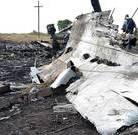In the early 1990s, scholars, journalists, and political observers predicted that the new Central Asian states would descend into chaos and break apart. More than 20 years later, Central Asia’s states seem relatively stable, both at their political centers and outlying territories, including states like Tajikistan that were once embroiled in civil war. Eastern Europe, meanwhile, is littered with frozen and active conflicts and states whose rulers may very well envy the staying power of their Central Asian counterparts.
With the exception of revolution-friendly Kyrgyzstan, Central Asia seems more stable than Eastern Europe on a number of fronts: the longevity of leaders, lack of civil or separatist conflict, and overall lower incidence of social protest. This stability has much to do with how rulers coerce populations, co-opt potential rivals, and collect revenues that keep them in power. Central Asia’s ruling elites have also proactively monitored unrest in Eastern Europe, the Caucasus, Iran, and more recently the Middle East, devising measures to nip similar challenges to their authority in the bud.
In this memo I explore another factor—the geopolitical dimension. Central Asian rulers, on balance, are more adept at neutralizing destabilizing geopolitical competition. Perhaps more importantly, they make crucial foreign policy decisions behind closed doors and then sell them to domestic publics as winning strategies. In contrast, Moldovan and Ukrainian rulers poorly mediated contradictory geopolitical pulls on their countries, deepened social divisions over their countries’ directions, and intensified mobilization across opposing camps seeking victory for their favored national vision. The Ukraine conflict and the dynamics of the Euromaidan are only the more recent of such ruptures. More turmoil lies ahead.









